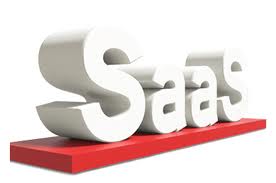
Head in the Cloud
Cloud-based software is blowing up these days. Recently Cisco, Google, Amazon and Microsoft made the headlines after announcing their investment in cloud technology. According to Eric Knorr with InfoWorld, the latest news helps us better understand the utility of cloud software and its role in user experience and b2b technical relationships. Knorr states, “To be clear, the events of last week do not indicate that we’re getting any nearer to putting everything in the cloud. But it’s getting clearer what should and shouldn’t be there. And what should be there is getting closer to its destination.” As a software consultant, Volano has seen firsthand the rise in demand for cloud-based technologies. In fact, consumers and businesses are realizing the benefit of cloud-based software that allows access to their work anywhere, solves a specific problem, has simpler, less-expensive pricing structures and is often more intuitive and business process friendly. Two of our mobile apps, Action Card and Steelwool are good examples. Both mobile apps were created to help serve a businesses where traditional on premise software was cost-prohibitive or did not solve their problem.
Software as a Service
Software as a service (SaaS) is defined as multitenanted software maintained by the provider with a browser-based client with a key focus on the user-experience. The opposite of this would be larger, enterprise systems or on premise licensed software. There are some key differences between the two. On premise software takes time, personnel and equipment for setup. Usually businesses need to purchase and maintain the server hardware and the systems are complex and expensive. Often maintenance contracts are needed and can be a large time commitment. SaaS models do not require server hardware, are priced on a “pay as you go” model and offers secure access from remote offices or the field. For many businesses, SaaS product offers a less expensive means of operating their business, tracking work and managing costs.
Working on the SaaS side of software as a consultancy forces us to continually evaluate the efficacy of our software in terms of the user experience. How easy is it for customers to find us? How easy is it for them to try the software and perform the necessary configuration to allow it to function in their business? This understanding comes from relationship building, communication and listening to the needs of our clients. To a large extent, the key to success in the SaaS space is bridging the gap between theoretical need and practical application. What was it designed to do and how is that playing out by the client? Good SaaS product incorporates features requested by the user and enhances their involvement and user experience.
Ideal SaaS Product Design
Joel York, the Executive Director of Marketing and Product at Meltwater Group wrote a good piece on SaaS product design that touches on the challenge of maximizing relevance for this cloud-based technology. Noteworthy is the extent to which marketing plays a role in the right potential customer driving traffic to your site. Creating content (public page optimization) that is useful to people, original and optimized so that search engines drive key the right people to your site. York writes that “great SaaS products provide an experience that adapts to the interest and expertise of users over time.” I agree with this. Software changes rapidly and SaaS product requires that you become an expert on the challenges your clients face. Not only does your software need to make life easier for them, your clients will stay with you when they see you as a subject matter expert in their field. Steelwool is wonderful representation of Volano’s understanding of workflow management and business processes. Action Card quickly demonstrates a keen understanding of franchise relations and the challenges of brand protection and franchise field management. As your customers adapt to the changes in their marketplace, so to must software continue to change. Agility, utility and access are at the core of this and the SaaS model will likely continue to grow.